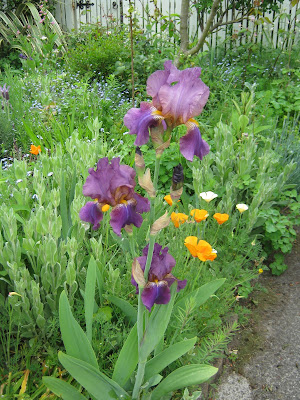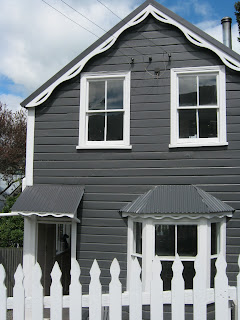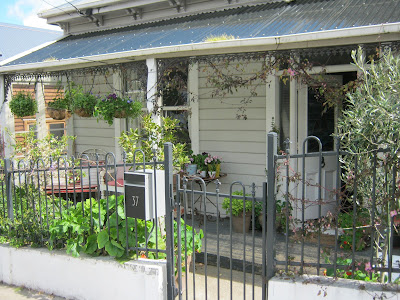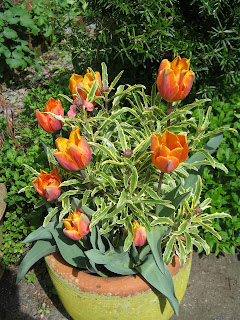Sadly, I've decided that this will be my last post. I've really lost enthusiasm for blogging, and have found it hard lately to find things to write about that would sustain my interest and the interest of readers. I'd like to thank those who have been regular readers and have offered kind and thoughtful comments during the seven years I've been blogging here. I won't be doing Instagram or Twitter as I find them too brief and superficial; I just don't like the "shoot from the lip" culture and don't wish to support it. So I wish you all well for the future, XXXXXX.
lynwaho
Waho: Maori word meaning far out, far flung, far off. Here are bits and pieces from an obscure corner of the world called New Zealand.
Sunday, December 4, 2016
The last post.
Sadly, I've decided that this will be my last post. I've really lost enthusiasm for blogging, and have found it hard lately to find things to write about that would sustain my interest and the interest of readers. I'd like to thank those who have been regular readers and have offered kind and thoughtful comments during the seven years I've been blogging here. I won't be doing Instagram or Twitter as I find them too brief and superficial; I just don't like the "shoot from the lip" culture and don't wish to support it. So I wish you all well for the future, XXXXXX.
Saturday, November 12, 2016
Catching up
Jungliness; green, green, green!
I've been neglecting this blog lately, because I've started doing my family history. This has proved to be quite addictive. I don't know a lot about my family, because my Dad was estranged from his and he and my Mum both emigrated to New Zealand in the 1950s, so I never knew any of my other relations personally. Three of my grandparents were already dead by the time I arrived, but since they were in England anyway I only knew my surviving grandmother by her letters to me. She died in 1968. So being "orphaned" on many levels meant that I knew little about the past, and then only what my mother knew or chose to tell me.
Some of the "family stories" that she told me have been proved to be quite wrong. Whether she made them up or whether she was told wrongly I don't know. Her belief that both of my great great-grandmothers (on her side) were Scots is totally untrue. There is a Scotsman, but a long, long way back.
It's fascinating but also frustrating. My paternal grandfather seems to be a man of mystery entirely - where he came from has so far eluded me. There have been some interesting discoveries; my favourites so far are Joseph Morgan Melville, who worked as a shipwright in Chatham Naval dockyards in the early Victorian period, and William Douglas, a ropemaker, also employed at Chatham around the same time. Chatham Historic Dockyards website is interesting, and I found several youTube videos about the ropemaking process.
This is the part I enjoy most about family history, finding the social history behind the names. It takes you to places and subjects you never would have thought about otherwise. Investigating my grandfather's role as a gunner in the First World War took me to books on field artillery, to see what kind of guns he would have been using - not something I would ever have had an interest in normally.
Anyway, here are some garden pics. A lot of rain has made the garden quite jungly, but things are coming out in flower regardless.
Friday, October 28, 2016
Friday, October 21, 2016
Bits and pieces
The bluebells were picking up reflected light from a window, making the blue quite glowy.
"Waterlily" camellia
Rhododendron in the morning light (not sure what this is called)
Church fair treasures. Old books, old jewellery, an embroidered doily and a funny battered old vase for miniature roses and jasmine.
Friday, October 14, 2016
A visit to Lyttelton
Interior of St Saviours Church, Lyttelton
 I went over to Lyttelton today to see this church (part of our Heritage Week celebrations). Lyttelton is the port town of Christchurch, accessed through a long road tunnel built through the remains of an old volcanic caldera. It has a special place in my heart because I was born there, and lived there for the first six years of my life. It has a very different feel from Christchurch, enclosed and hilly as opposed to flat and open. It was one of the first towns established by the European settlers, and was a major entry port for immigrants, who then trudged wearily over the hills to Christchurch.
I went over to Lyttelton today to see this church (part of our Heritage Week celebrations). Lyttelton is the port town of Christchurch, accessed through a long road tunnel built through the remains of an old volcanic caldera. It has a special place in my heart because I was born there, and lived there for the first six years of my life. It has a very different feel from Christchurch, enclosed and hilly as opposed to flat and open. It was one of the first towns established by the European settlers, and was a major entry port for immigrants, who then trudged wearily over the hills to Christchurch.
St Saviour's church was originally sited in West Lyttelton, and its particular mission was to minister to sailors. When worship was centralised in the town at Holy Trinity, St Saviours, then surplus to requirements, was moved through to Christchurch, becoming the chapel for the Cathedral Grammar School. Now it's back in Lyttelton on the site of the Holy Trinity Church, which sadly collapsed completely during the earthquakes. The central light fitting of Holy Trinity, the Corona Lucis, has been restored and re-installed in St Saviours. The original font from Holy Trinity, where my own little baby-bald head was baptised, is also now in the church.
The restored Crown of Light
Bored choir members whiled away the sermon carving their names into the organ-front. One W. Furneaux appears twice, in 1903 and 1905.
Very pretty reredos with grape motifs
Christ calming the waters, appropriate for a seamen's church.
The vicarage was also damaged badly, but is due to be restored soon.
Many picturesque old buildings abound. The town had a serious fire in the 1880s, and much of the early commercial centre was destroyed, but there are still many residential buildings from this period and after.
The earthquakes took a big toll on the old buildings of the port town. This is one of the prettiest houses, still awaiting restoration. When I was a child an old lady called Pretoria Wern lived here, a Boer war baby judging by her name.
This is my old house. It has gone through several phases of gentrification since we lived there. I still have a brass kettle and a china wash-basin jug that my father found in the cellar. It looks romantic but was a cold dark house which got little sunlight. I hope the present owners are more comfortable in it.
The street market, London Street. Every Saturday Lyttelton has a market in the main street. Many of the old buildings here have been removed due to earthquake damage, and sad, neglected sites gape open. Lyttelton has now become a trendy place for the kind of wealthy people who can afford to look poor, and with the alternative crowd of new hippies and creative types (think Portland only a little more gritty); it used to be very working-class, with most men employed on the wharves or on the railway that serviced the port.
Old house in Winchester Street. Old cottages here are often built right on to the pavement, which looks very quaint. Many of the street-names here are English; Oxford Street, Winchester Street, London Street. Homesick settlers touchingly called dirt tracks after busy thoroughfares in their homeland. They were nothing if not optimistic!
I hope you've enjoyed this look at a bit of Lyttelton, a town well-worth visiting on a fine and sunny spring Saturday.
Thursday, October 13, 2016
Rainy day gardening
Dodging in and out of the rain showers today to get some vegetables in the ground, lettuces and spring onions and chives. I've bought some potatoes and tomatoes which will go in soon as well.
Camellia japonica "Dahlonega"
Why we use peastraw
Everything is green and lush
Beuatiful clematis - a NZ native Clematis paniculata. This has climbed right to the top of the plum tree
Parrot tulips
The latest window-treatment - bird splatter!
"Iceberg" lettuce
Ranunculus and bluebells
Magnolia liliflora makes a nice arrangement in this tall vase
Thursday, October 6, 2016
More spring pics
We have had a fairly miserable spring here in Christchurch. It's been cloudy and cold for the most part, but flowers and plants are still doing the Spring Thing. Today we had some sun (until it started raining again) so I took these snaps.
This is "Shirotae", the Mount Fuji cherry.
Lily-flowered magnolia
The blossom on the pear tree was humming with bees.
Subscribe to:
Posts (Atom)
























































